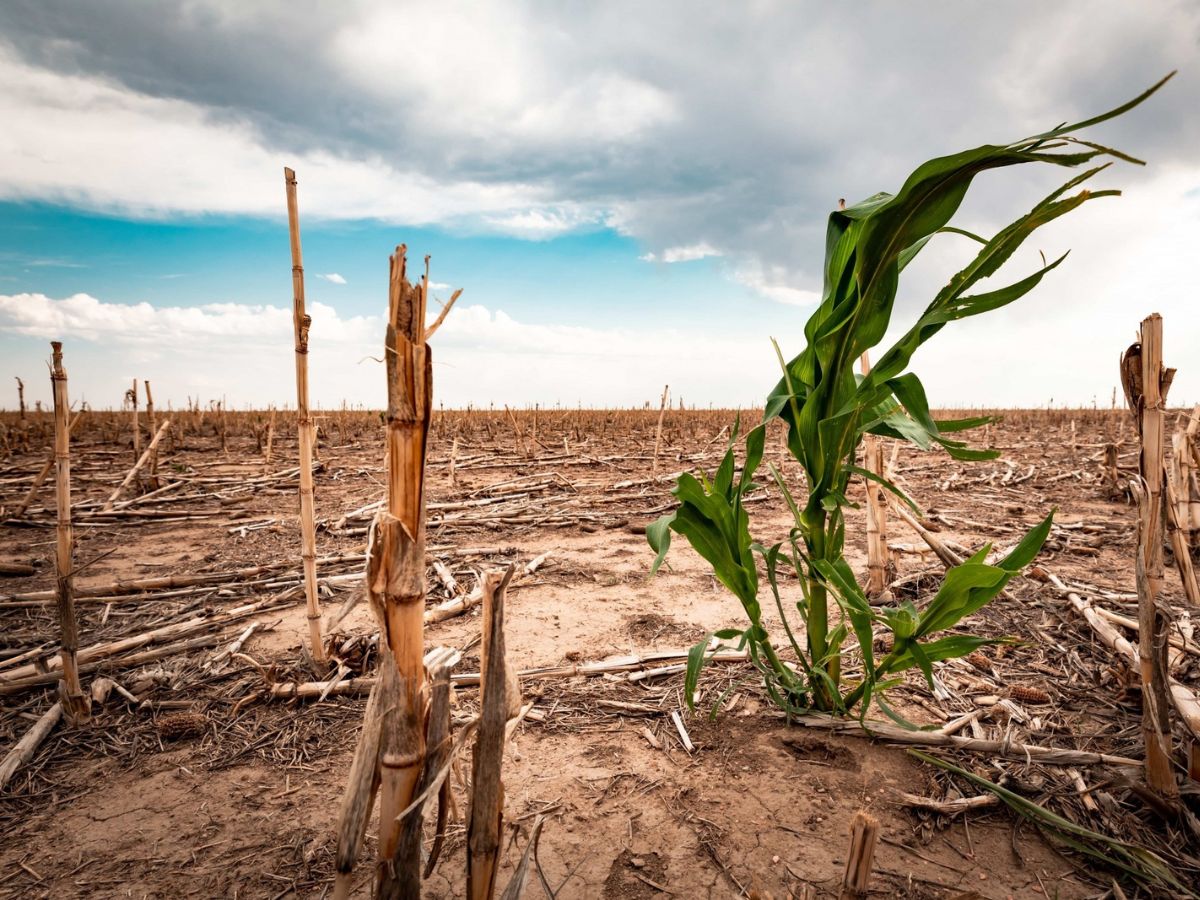We have heard a lot about water pollution, air pollution, and noise pollution. Still, we often fail to pay attention to the very land beneath our feet. We try to act with sagacity while using electricity and water. Still, we are somewhat oblivious when it comes to the ground we live on.
Soil is arguably the most essential resource on the planet. This doesn’t make the other resources any less critical but highlights that all other resources would not bear fruit without land.
Source: https://www.wbur.org/hereandnow/2019/09/20/soil-degradation-climate-change
Approximately 10,000 years ago, with the advent of agriculture, humans transformed themselves from nomadic hunter-gatherers dependent on foraging hunting from survival to establishing communities and larger groups. Since the start of agriculture, food production has increased by a hundred folds. This has enabled humans to advance and prosper.
Around 2000 years ago, the human lifestyle became dependent on agriculture. Food surplus enabled humans to concentrate on tasks not related to farming. This allowed the human population to triple and established them at the top of the food chain.
But the soil in recent times is losing its nutrient value. Traditional farming practices use many pesticides, contaminating the soil and depleting soil quality.
Similarly, activities like slash and burn, a practice involving burning and clearing land to make way for farmland, are very harmful. Slash and burn is unsustainable as it is only used as long as the soil is needed to restore plant fertility and left empty once it loses it. Moreover, this activity also kills millions of plant species and displaces wildlife from their natural habitat.
Overuse of soil for grazing cattle can outpace natural vegetation. This uproots plants and hinders the soil’s ability to play its part in maintaining a healthy ecosystem as it is being exposed to soil pollution. Over time the exposed land loses its fertility and becomes barren; barren lands turn to deserts via a process known as desertification.
Mining also harms soil quality, requiring resources to be dug from others while destroying terrestrial life and forest covers. Often, waste products from mining activities are lodged back into the ground, causing land degradation.
Other factors include deforestation. Plants help hold the soil together and prevent it from erosion. Deforestation, however, does the reverse. EU forest land is expected to decline between 18 percent and 15 percent by the end of this century. It goes without saying that without soil, we would have no land to live or a place to grow our crops. In essence, all species would fail to survive.
Source: https://waterclimate.wordpress.com/research/climate-change/
Soil erosion results in the slackening of the water-holding capacity of the soil. This increases flood damage, reduces soil capacity to store more water, and increases flood destruction.
Soil health is directly proportional to global climate change. The soil might be a colossal carbon storer. Still, human farming activities such as plowing throughout history have released approximately 133 billion metric tons of carbon into the atmosphere. Permafrost stored in boreal regions has a massive concentration of methane. As temperatures rise, the ice melts. This causes the organic material stored inside the permafrost to melt. Consequently, vast amounts of greenhouse gases could be released into the atmosphere, accelerating global warming so much that it becomes nearly impossible to control.
An increased amount of carbon dioxide in the atmosphere leads to global temperatures. The Paris Agreement pledged to keep global warming below 2 degrees Celsius. Still, with recent trends, it is predicted that this threshold could be crossed as early as 2050.
Increasing temperature melts the massive glaciers in Antarctica, the Arctic, and the Himalayas, significantly leading to a rise in global sea levels. Rising sea levels don’t just pose a threat to cities and human life but also to soil itself. Rising sea levels bring sediments and deposits from different parts of the world. Excessive salt from the sea and other harmful substances can seriously deplete soil health, leaving the soil inarable, unproductive, and of no use. Once the soil is turned barren, it cannot be used for anything. Research is being done to overturn the damage of desertification to the soil. However, this process will take time and be very expensive. According to one study, the earth could lose up to 50 percent of its arable land by 2050. Soil can not be recreated in a lab. The process of natural regeneration of soil- breaking and withering of rocks, ultimately being covered to sediments, and finally, the soil takes up to 100 years for just one inch of topsoil.
. Initiatives like the “save soil” movement help raise awareness about the same. Sadh Guru, arguably the most famous advocate of the soil movement, traveled to 27 different countries over 100 days on a motorcycle to bring people together to save soil.
HOW CAN SOIL BE USED TO TACKLE CLIMATE CHANGE?
Soil holds the largest reserve of carbon, even more than the atmosphere. Since soil has a high carbon-storing capacity, it is possible to store the excess carbon dioxide in the atmosphere and bury it in the land. And with increasing human activities and increased carbon dioxide production, conserving the soil becomes even more essential.
Source: https://easac.eu/news/details/regenerative-agriculture-healthy-soil-best-bet-for-carbon-storage/
Soil houses millions of organisms, from fungi to insects and microorganisms. These microorganisms need enormous amounts of carbon dioxide to survive. This included the Harnessing Plants initiative, which hopes to bioengineer plants that will churn out the good from the carbon-suberin. Even if the plant is no more, the carbon will stay buried in the soil and not pollute the environment.
It could prove to be a significant player in climate action. Restoring the current ecosystems, such as forests, marshlands, and sea beds, can assist in storing excessive carbon dioxide from the atmosphere and promote biodiversity.
Soil can also help in flood prevention and protection against heat waves. Excess water stored in the ground can be slowly released during the dry season, mitigating droughts and stabilizing temperatures. This further helps in the prevention of wildfires which are traceable to high temperatures.
The groundwater level is restored by water seeping through the earth’s surface. Soil regeneration could promote that.
Soil is both a carbon sink and a carbon stock, meaning that it captures carbon from the air and also stores it. Healthier ecosystems could store more carbon, which is a decisive factor in harnessing climate change action plans.


Comments are closed.